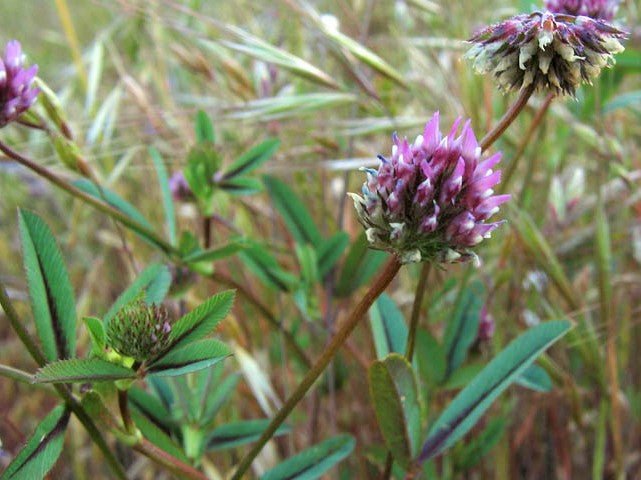
Foothill Clover Seeds (Trifolium cilolatum)
An under-utilized remediation plant -- bring life back to bare, dry, compacted soils.
The native clovers of the West Coast comprise a widely overlooked and underappreciated group of plants that are now mostly absent everywhere, out-competed by non-native grasses and foreign clovers. Once occurring from British Columbia to Baja, our native clovers are well adapted to fire, tidal inundation, poor soils, and other tough conditions.
These traits make them worthy of a second look. Foothill clover is a prime example, with a tolerance for harsh conditions that makes it an under-utilized plant for harsh locations, such as compacted sites where construction or other disturbance has occurred. With an annual lifecycle and a fast growth habitat, foothill clover quickly helps restore barren, damaged ground and rebuild soil biology. The plant produces creeping red stems and upright flowering branches. The interesting bright pink/purple flowers begin as upright clusters, then droop as they age to create a bristly mop-top. On average foothill clover remains around a foot in height, but can occasionally climb higher, especially when it has surrounding vegetation to help prop it up.
Foothill clover has edible foliage and seeds and has a long history of use as a food source by first nations people.
Approximately 400 to 600 seeds (2 grams).
